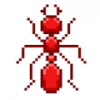For the last month and a half I have been perfecting my rearing of Tetramorium caespitum (a species that had given me trouble when first starting out). However due to a flaw in the atom C that they were currently housed in and fights among the remaining queens (the colony originally had 12, but this has eventually boiled down to three due to pleometrophic founding.), the number of workers has dropped from 87 to roughly 67 and in a recent scuffle between two queens, the victor lost 2 of it's legs and crippled one and the other (which was removed manually by me) had lost a single leg, had both of her antennae trimmed (not all the way to the scape, so the do still function properly.) and now walks in a "jittering manor" and continually bobs her abdomen up and down (stridulation). The exiled queen was placed in a tube with a temporary water source for safe keeping and I'm wondering what I should do with her and the victor, since both have been greatly weakened and since this colony is very valuable to me (they have an absolute TON of brood and this Tetramorium colony is the most prosperous one I've ever had and understandably I would like to keep it that way.). Any Ideas or comments on the state of things would be great. Just to know what you guys would do when confronted with this situation would be fine.
Edited by ctantkeeper, August 25 2016 - 5:57 PM.
















